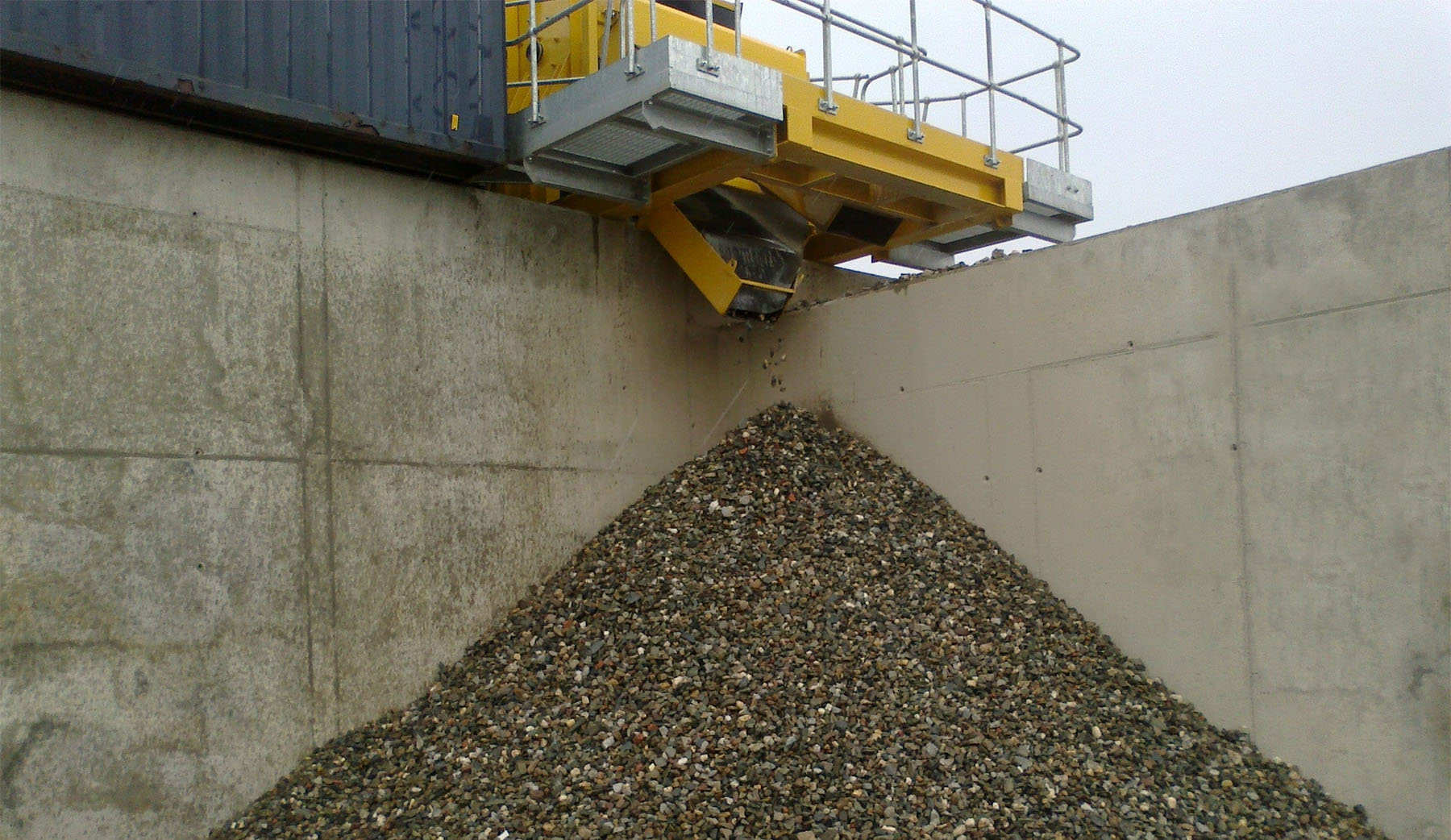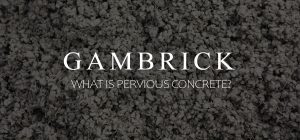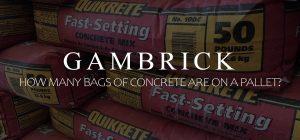
Can Concrete Be Recycled?
Concrete can be recycled by breaking it up and crushing it down into small aggregate, which can then used to create new, reusable products. Concrete is made by mixing sand, cement, gravel and water. When broken down, the sand and stone can be used again. Typically recycled concrete is used to create a base material or aggregate for new concrete.
I’ve been a mason for over 25 years and can tell you firsthand that there are many benefits and uses for recycled concrete. It’s a recyclable material which makes concrete a green building material. This has all sorts of environmental benefits but is also good commercially.
It’s generally better to re-use a material rather than to discard it. Commercially, concrete is removed from the site, crushed and broken down at a plant and then turned into a new material. Often that new material is more concrete.
If your concrete has cracks, you can repair it with a crack filler or demolish the slab and replace it. If you go the demolition route, contact a local recycling center to see if they accept concrete. Usually they accept and recycle the material for free.
Any metal in the concrete, such as anchors, nails, and concrete screws are filtered out after the material is crushed and sifted. This leaves behind only aggregate, which can then be recycled into something else.
There are lots of applications for recycled concrete, like sidewalks, patios, barges (did you know concrete can float), countertops, and statues. But it isn’t typically used to make the strongest concrete that’s used for foundation work.

Concrete Can Be Recycled
It’s easy for most of use to recycle small household items like plastic bottles, but what about larger items like concrete.
In the United States, we calculate how much solid waste is produced each year and how much of that is wasted. A large contributor of solid waste in the US each year is construction and demolition waste. This accounts for around 25% of the waste we produce every year. 70% of this waste can be attributed to concrete. Imagine how much benefit there would be to landfills if all that concrete was recycled rather than thrown away.
For people that aren’t concerned with the environment, recycling concrete makes sense financially too. Concrete is only made from cement, sand and aggregate stone. Crushing it breaks up the cement and releases the aggregate which can then be re-used. Since aggregate is typically the most expensive ingredient in concrete it makes sense to re-use it. Especially since recycled aggregate is generally just as strong as new.
There’s also transportation costs to consider. Hauling broken concrete around is very expensive. Concrete is heavy. For small slabs you may not realize just how heavy it is but a foundation or entire building worth of concrete can easily be 100 tons or more. That’s a lot of weight to haul.It’s better to re-use as much as possible on site rather than pay to haul it around.

The Process Of Recycling Concrete
Commercial sites are where the bulk of concrete recycling is done. After a building or foundation is demolished, the concrete is typically hauled to a site and then broken down and crushed into small pieces by machines. The aggregate stones are then re-used to make a base material or new concrete.
There are a few ways concrete is recycled and/or re-used.
- Recycling Wash Water: Wash Water is the water that’s used to wash and clean concrete machines and tools. This water is recycled by filtering out large chunks of solid material and then transported to a water treatment facility where it is treated and put back into a city or natural water source. It can also be used to mix new batches of fresh concrete.
- Recycling Water Solids: Concrete solids are the aggregate materials filtered out of wash water. These materials are separated into coarse and fine piles and then used to make new concrete or base material.
- Recycling Solid Concrete: Solid concrete that has been demolished can be recycled on site or at a plant. Machines crush or grind the concrete up into small aggregate that are then used as a base material or to make new concrete.
- Recycling Wet Concrete: What happens when you mix more wet concrete then you actually need? There are a few ways wet concrete can be recycled. It can be used at another job site, as a cast material to make countertops or fireplace surrounds, washed down into aggregate or dumped and left to harden so that it can be recycled later.
Recycling Concrete At Home
Recycling concrete at a plant is the easiest way to do it. But you can do it at home too. It just takes a lot of manual labor.
Concrete can be reused for new projects at home if it’s broken down first.
- Large chunks can be used to create new structures like a retaining wall. The chunks can be held together by fresh concrete or dry stacked.
- Small chunks can be used as a base material.
- Loose aggregate can be used as a base or to make new concrete.
- Heavy chunks can be used for their weight if you need to weigh something down.
I’d recommend hiring a professional to recycle the concrete for you if it’s thick or has rebar. The machines needed to break down and crush concrete aren’t something you can rent. Many companies will take concrete at no charge and will recycle it for free. You just have to pay for transportation.
The good thing about hiring a company to do the recycling for you is that you don’t have to pay disposal fees. Here in New Jersey I can buy a concrete dumpster for around $300 with a 20 ton limit. All I have to do is fill it up and the company does the rest.
Small slabs are easy to break up with a sledge hammer if you need base material but it would be very hard to grind concrete down into aggregate by hand. Unless you need some base material I’d recommend hiring a professional to recycle your concrete even if the slab was small.
The best and most common at home use for recycled concrete is as a base material. If your installing fence posts, a mail box, building a deck or pouring a shed floor, a gravel base is recommended.
On Site Concrete Recycling
For huge job sites, like the demolition and reconstruction of a building, on site concrete recycling is a cost effective option.
Portable crushers can be set up right on the job site including all the conveyors needed to feed the machine. It generally works best to set up a centralized location where the concrete can be demolished but will not hinder site traffic.
Once the concrete is broken down it can be reused as a base material, to make new concrete or more easily transported off site. It can even be sold right from the site.
Here’s some equipment factors to consider:
- Equipment should be ale to pull or separate steel from concrete
- Decide if control systems should be automatic, manual, or remote
- Systems should have conveyors and crushing equipment to provide complete processing of the concrete
- Equipment to move the crushed concrete around the site should also be included
- Keep your recycling area close to where you’ll make the new concrete or base material. This will limit the amount of transport needed.

The Benefits Of Recycled Concrete
Recycling concrete has a lot of environmental and commercial benefits. Disposal and transportation costs go up pretty much every year. Being able to break up concrete and recycle it at a large scale job site can be a big savings. Instead of spending money to transport and dispose if old concrete. It can be broken down and re-used as new concrete.
In addition to rising costs, landfills are also becoming more regulated. Many contractors and homeowners around the country are finding it difficult to dispose of old concrete. This leads to even more transportation costs unless you have a landfill near bye that accepts it. By recycling concrete, you can avoid some of these issue and save money.
Recycling concrete is also extremely beneficial for the environment. Concrete is typically large and takes up a lot of landfill space. Recycling keeps concrete out of the landfill and keeps it in use. It’s always better for the environment to re-use a material rather than throw it away. This saves the cost and energy that would otherwise be used to mine and process new aggregate.
Using a recycled aggregate also offers some additional cost benefits. For example, CA6 recycled aggregate is 15% lighter than virgin CA6. This means that you get 15% more volume per ton with your order. That can add up to a big cost savings on a large project. And generally recycled aggregate is just as strong and durable as new.
Long Term Benefits
In addition to the short terms advantages of recycling concrete like saving money, there are lots of long term environmental benefits too.
- Recycling Concrete Saves Money: Recycling concrete can save over 20% in material costs alone. This is in addition to transportation and disposal costs.
- Recycling Concrete Saves Water: Producing concrete uses a lot of water. This costs money and has environmental concerns. By reusing wash water you can save money. This is very beneficial construction companies that could be charged up to $25,000 for incorrectly disposing their wash water.
- Recycling Concrete Helps The Environment: The environment sees the most benefit from recycling. It doesn’t really matter what type of material your recycling, it’s almost always the better option in terms of the environment.
- Mining: Aggregate stone is the ingredient that gives concrete it’s strength. And it’s not easy to mine all that stone. If you can re-use aggregate it not only saves money in terms of mining costs but is much better for he environment in the long run.
- Exhaust: Transportation of all that concrete can create a lot of exhaust fumes to deal with. The less you have to haul concrete around the better it is for everyone. Depending on how far the concrete has to be driven this savings can really add up. It’s best to do all your concrete work in one centralized location if possible.
Summary: Can Concrete Be Recycled?
Concrete can be recycled by breaking it up and crushing it down into small aggregate, which can then used to create new, reusable products. Concrete is made by mixing sand, cement, gravel and water. When broken down, the sand and stone can be used again. Typically recycled concrete is used to create a base material or aggregate for new concrete.
I’ve been a mason for over 25 years and can tell you firsthand that there are many benefits and uses for recycled concrete. It’s a recyclable material which makes concrete a green building material. This has all sorts of environmental benefits but is also good commercially.
It’s generally better to re-use a material rather than to discard it. Commercially, concrete is removed from the site, crushed and broken down at a plant and then turned into a new material. Often that new material is more concrete.
If your concrete has cracks, you can repair it with a crack filler or demolish the slab and replace it. If you go the demolition route, contact a local recycling center to see if they accept concrete. Usually they accept and recycle the material for free.
Any metal in the concrete, such as anchors, nails, and concrete screws are filtered out after the material is crushed and sifted. This leaves behind only aggregate, which can then be recycled into something else.
There are lots of applications for recycled concrete, like sidewalks, patios, barges (did you know concrete can float), countertops, and statues. But it isn’t typically used to make the strongest concrete that’s used for foundation work.
If you have any questions email or leave a comment below.

John Mazzuca | About | More Posts |
Custom Home Builder
John Mazzuca is a custom home designer and builder at Gambrick with over 25 years experience in the construction industry. John has designed, built and/or remodeled hundreds of homes, small buildings, and commercial projects. He writes about business, real estate, home building, and household electronics. His work has been featured in Fox Business, Better Homes & Garden, House Beautiful, and more.




















